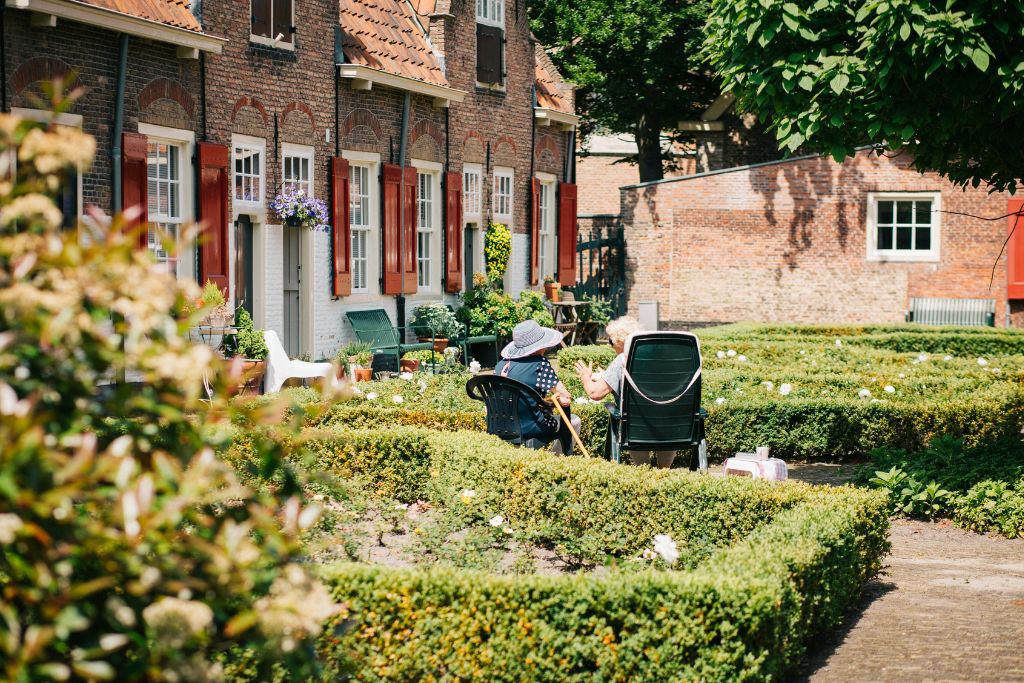Sustainable efforts continue to expand, changing one industry after another. The recent rise in green retirement options has urged seniors to rethink ecological living for various reasons, including more affordable home maintenance, better overall well-being, and protecting the planet. Learn more about this growing green lifestyle trend, its features, and how you can benefit from it.
—
Green initiatives began as a flicker several years ago, sweeping through industries from construction to finance and now senior living. About 30,600 assisted living communities throughout the US provide almost 1.2 million licensed beds. If these numbers all go green, it will carry a wave of massive positive change for the environment and help curb the worsening climate problem.
Sustainable Retirement
Like in other sectors, sustainability is fueled by the optimistic benefits encompassing all health aspects. Facilities providing senior care pursue ecological lifestyles in the following ways.
- Renewable energy
Many communities are shifting from fossil fuels to solar panels to power their units. It is cleaner and lowers residents’ monthly electric bills.
- Building architecture
They are opting for environmentally friendly and recyclable building materials, such as wood, brick and glass coverings. These boost insulation throughout all seasons, with walls retaining heat in winter and keeping indoors cooler during summer.
- Rainwater harvesting system
Having passive and active resource caching systems allows residents to collect and use water in many ways, such as flushing toilets, irrigating plants, bathing and washing laundry.
- Low-flow water fixtures
Over 45% of water use in an average American household happens in the bathroom. Many communities are revamping their plumbing design to slow water pressure in the toilet, shower, and kitchen faucets. It minimizes waste that converts into savings.
- Leadership in energy and environmental design (LEED) certification
LEED is a globally recognized rating system granted by the Green Building Certification Institute. Many senior living companies pursue this as proof of sustainability and to attract ecologically conscious residents.
What Attracts Seniors to Pursue Sustainable Retirement Options?
Many older adults move because of rising home maintenance. Annual upkeep can cost anywhere between 1-4% of the total cost of your residence, meaning you will spend about $20,000 each year to maintain a $500,000 home. To reduce those expenses, check for these aspects.
- Renewable electricity
The community can power their units using clean energy sources. It is self-sufficient to promote efficiency, leveraging solar panels, LED lighting and smart thermostats to reduce environmental impact. These options lessen seniors’ monthly bills.
- Accessible transportation
The facility should support ecological transportation options, such as having bike-friendly infrastructure to encourage residents to participate, providing access to electric vehicle charging stations and shuttle services to public transportation to lower reliance on private cars.
- Gardening
Many curve into the route of food independence by creating their own gardens to taper off emissions, provide a refuge for local species and have access to chemical-free produce. Gardening is a meaningful hobby many seniors share, and being near green spaces benefits mental, social, and emotional well-being. The joy of planting and harvesting their own organic produce can give residents a sense of purpose.
- Quality indoor air
They use renewable and recyclable materials – such as cork, stone and wood – during construction to dial down the environmental impact and simultaneously promote healthier indoor air for residents.

What Are Other Benefits of Moving Into a Green Community?
A green senior living facility has several advantages for the residents, the business and the environment.
- Reduced carbon footprint
Home energy use contributes to 20% of greenhouse gas emissions in the US. Wealthier people have 25% higher footprints than those with lower incomes because of larger space. Efficient design and practices in green retirement facilities can keep individual carbon footprints to a minimum.
- Access to green spaces at any time
A sustainable community gives seniors access to wider green spaces that affect their health positively. One study found older adults who participated in a 24-session therapeutic gardening program maintained healthy sleep patterns and mental health, including reduced anxiety and improved brain function. Their mean happiness score also increased. The more available nature is to you, the better it is for your well-being.
- Strong sense of community
Loneliness is a prevalent problem among seniors who live independently. By moving to a retirement community, they can make friends who foster shared values around sustainability. They get more social opportunities and avoid loneliness more easily.
What Are Top Sustainable Communities in the US to Retire to?
Leading a sustainable lifestyle can be challenging initially, but things get better after a while. Here are three examples of thriving eco-conscious communities that incorporate sustainability in their way of living.
- Dancing Rabbit Ecovillage
This community in Missouri started in 1997 with six members who left California to search for a new home where they could pursue ecological living. The community has since grown, with more than 40 members dedicated to creating a place that prioritizes the environment. They grow most of their food, and each house follows sustainability guidelines in building materials, techniques and design.
- Sawyer Hill EcoVillage
This ecovillage is located in Massachusetts and uses the best sustainability practices in housing development. Homes meet the LEED standards, while the clustered units allow residents to leave more than 75% of their 65-acre compound for open space. The community maintains organic gardens, uses neighborhood lighting systems, and has shared facilities like a dining hall and play area for kids.
- EcoVillage at Ithaca
This hamlet in upstate New York is one of the pioneers in the country’s green community. It is set on 175 acres of land, with over 90% of the space preserved for farming, recreational trails and wildlife habitats. The two onsite farms provide fresh vegetables and fruits to 1,500 people in the Ithaca area. It currently has 100 homes clustered within a 10-acre zone.
How Can You Support Sustainability in Your Community?
Seniors who are not ready to downsize and relocate to a green community can gradually adopt sustainability practices to lower their carbon footprint. Here are strategies to try.
- Participate in community gardening
Check if your church, nonprofit organization, or neighborhood association has a shared garden close to home and ask how to become a member. Tending a garden is a great opportunity to stay active and social instead of being cooped up and living sedentary. Get to know other members of the community and build friendships.
- Advocate for renewable energy adoption
Advocating for clean energy is challenging if you know little about it, so start by learning everything. Pioneering the adoption by installing solar or switching to LEDs gives you more convincing power to entice others in your neighborhood to do the same.
- Engage in local sustainability groups and initiatives
Sustainability projects are widespread, so get involved in a program in your local area. Check if there are recycling, tree-planting, composting, or community-supported agriculture programs, and volunteer to be part of them.
- Eat locally
Support local merchants and pick eateries that source their products from nearby farmers and suppliers.
Sustainable Retirement Options Promote Health
A healthy environment translates to cleaner air, water and more nutritious food. Moving to a sustainable community to retire empowers seniors to be part of the climate solution. By changing one or more aspects of their lifestyle, whether choosing restaurants using local produce or downsizing and relocating to a smaller home, they can become role models for green movements. Consider eco-friendly factors during your retirement.
Featured image: joyce huis/Unsplash
You might also like: 4 Steps to Reduce Your Carbon Footprint
This story is funded by readers like you
Our non-profit newsroom provides climate coverage free of charge and advertising. Your one-off or monthly donations play a crucial role in supporting our operations, expanding our reach, and maintaining our editorial independence.
About EO | Mission Statement | Impact & Reach | Write for us

















